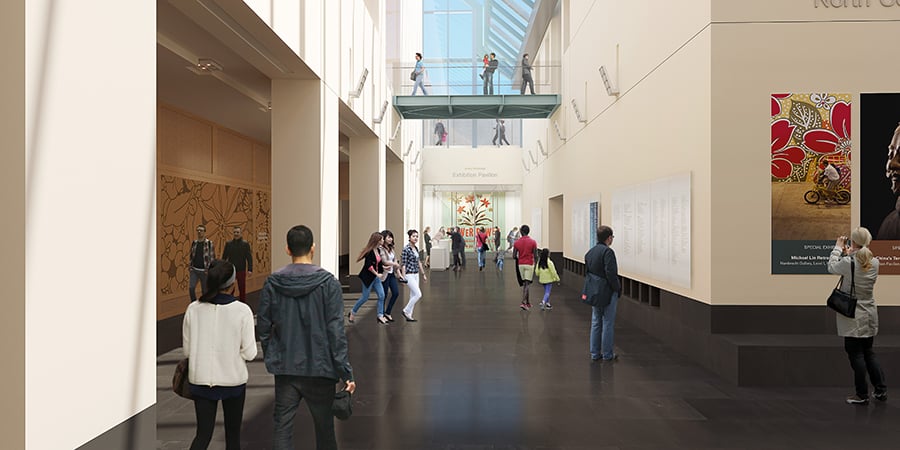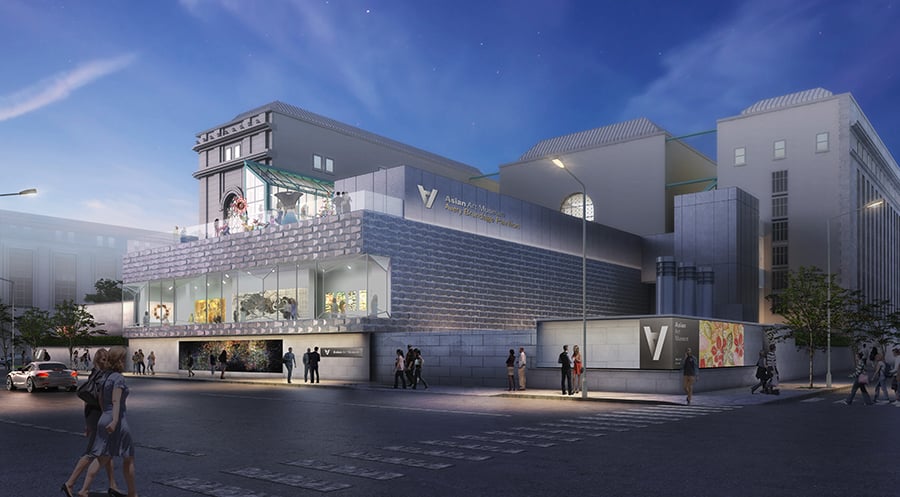
September 26, 2017
Revealed: wHY’s $90 Million Expansion for San Francisco’s Asian Art Museum
Opening Summer 2019, the project features a 7,200-square-foot outdoor terrace for installations and sculptures.
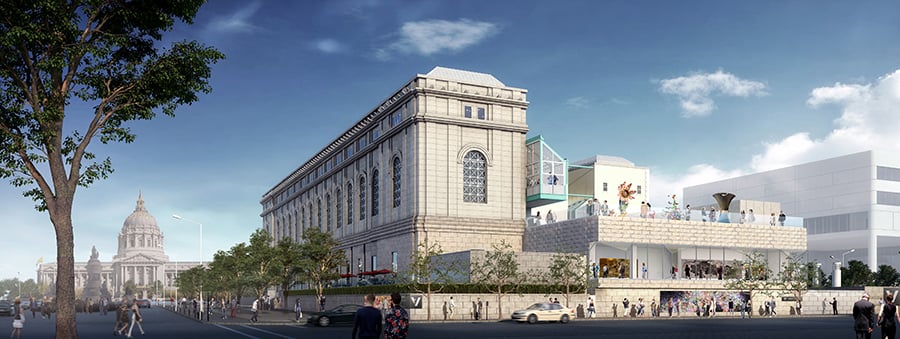
Today, the Asian Art Museum unveiled plans for a 13,000-square-foot expansion designed by Kulapat Yantrasast of New York and Los Angeles–based wHY. The glass and terra-cotta addition will contain a new gallery and outdoor sculpture gallery/terrace; the project will also include a new education center and other technological upgrades throughout the museum. The expansion will grow the Museum’s current building, a 1917 Beaux Arts structure (originally San Francisco’s Main Library) adapted by Italian architect Gae Aulenti in 2003.
The Museum, which is owned by the City of San Francisco, is home to more than 18,000 artifacts. With this expansion, the institution is seeking to expand the size and scope of its exhibitions. “The goal of the transformation is to tell the vital story of Asian art, from prehistory to the present, as an evolving, globally relevant tradition,” says Jay Xu, director and CEO of the Museum in a press release. “Museum visitors will discover fresh connections between Asian art and the world around them, engaging with the topics and issues that inspire artists working today.”
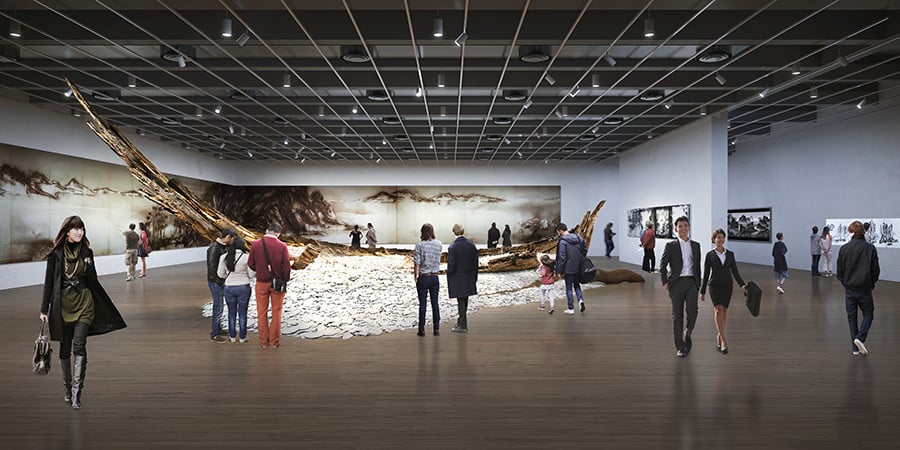
The project includes two principal components: The Pavilion and Art Terrace and The Koret Education Center. The Pavilion features 8,500-square-feet of continuous exhibition space that will be topped by the Terrace, a 7,200-square-foot outdoor space for installations and sculptures. The Koret Education Center is a new multifunctional classroom with a capacity for 75 that will be used for educational and public programming.
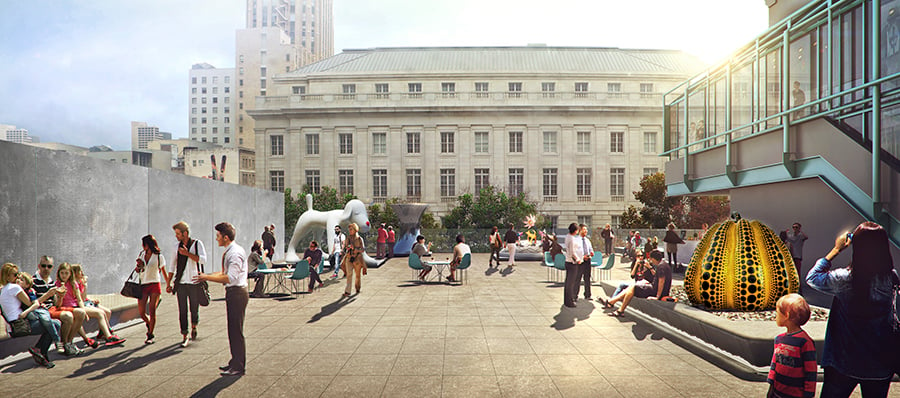
Technological improvements will be installed throughout the Museum’s galleries, with touchscreens offering multilingual support, wayfinding assistance, and information on museum events. “Immersive interpretive content—delivered via location-aware technology—will let visitors uncover more about artworks on view, allowing them to appreciate them in a variety of contexts,” says the Museum in a press release. “This dynamic digital footprint will extend beyond the walls of the museum, engaging audiences from around the world via a mobile-friendly website, lively social media platforms and multilingual apps.”
“This project has critical potential for culture in our time,” says wHY founder Kulapat Yantrasast, who was born and raised Bangkok, Thailand, but educated in Japan. “As an immigrant who came to America 12 years ago after living in many Asian cities, I absolutely believe in the power of culture to connect people.” Yantrasast, who founded wHY in 2004, previously worked at Tadao Ando Architect & Associates for eight years. wHY’s other major recent commissions include the Ross Pavilion & Garden project in Edinburgh, Scotland and the 2nd & Vignes development in Los Angeles.
You may also enjoy “Mass MoCA’s Latest Addition Gives Transformative Re-Use an Epic Stage.”









